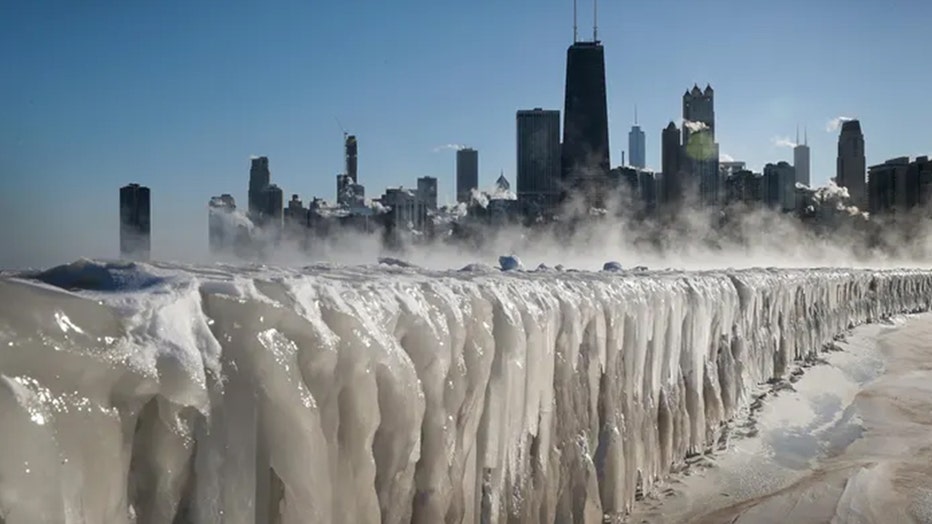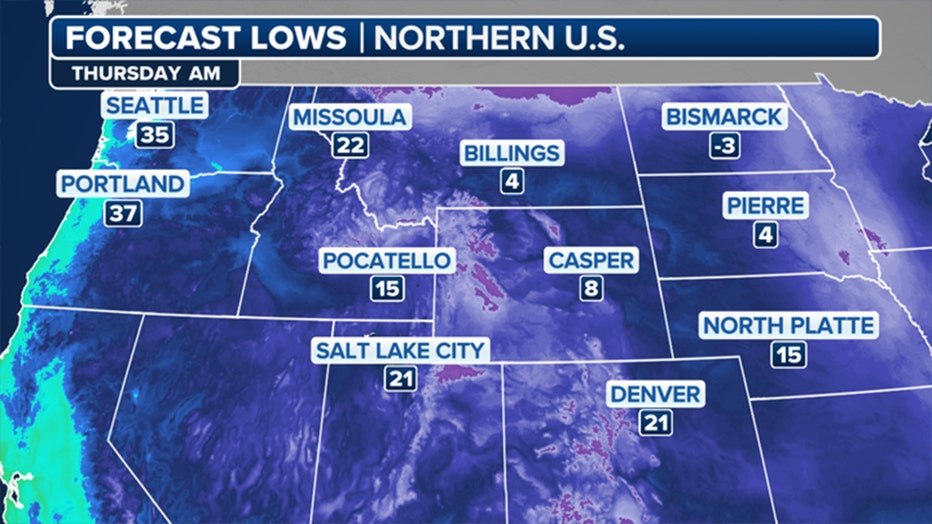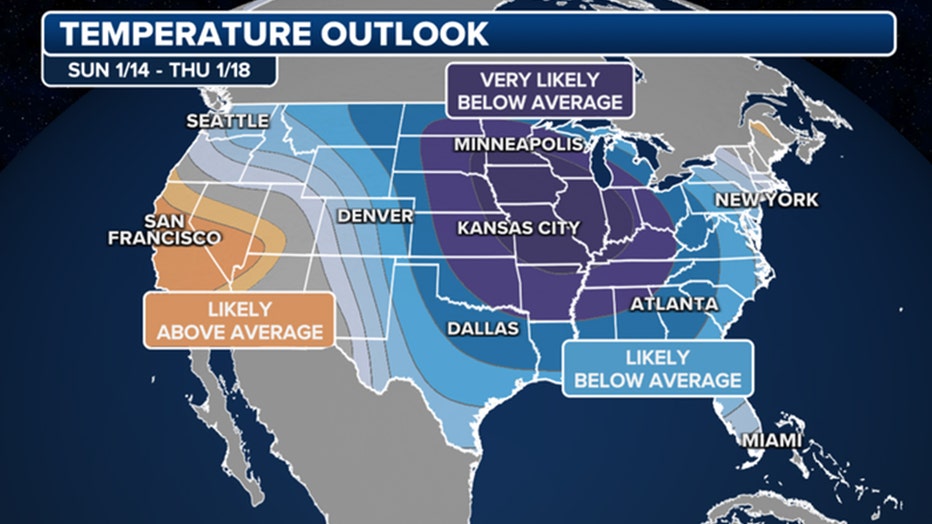Polar vortex to send arctic blast deep into US later this week

Powerful storm hits NYC with high winds, rain
Another powerful storm is lashing the Northeast. Strong to potentially damaging winds will accompany heavy rain, with wind gusts up to 70 mph. Power outages are expected to be widespread along the Northeast coast, according to the FOX Weather.
Dust off the parkas. After a mild December, the polar vortex is set to send an arctic blast into the U.S. later this week.
"That polar jet will be pushed further south, and guess what that does? It opens up the freezer door," said FOX Weather Meteorologist Kendall Smith. "So all of that cold, arctic air that has been bottled up right over Canada, right over the Arctic, is going to be blasting its way right into the Lower 48."
According to the FOX Forecast Center, this will likely be the coldest air felt across the Lower 48 so far this winter. The chill starts late week in the Intermountain West and then digs into the central U.S. early next week. The frigid air will stick around for a while.
WHEN IS THE COLDEST TIME OF THE YEAR?
How cold will it get?
Weekend temperatures could drop into the range 30-50 degrees below average for this time of year for some locations. Wind chills could approach -50 degrees in several places.

File: Ice covers the Lake Michigan shoreline on January 30, 2019 in Chicago when the polar vortex stretched south. (Credit: Scott Olson / Getty Images)
The temperature outlook from the Climate Prediction Center shows well-below-average temperatures through Minneapolis, Kansas City, Little Rock in Arkansas, Nashville in Tennessee and Chicago through Jan. 18.
HERE'S HOW LONG IT WILL TAKE YOU TO GET FROSTBITE AS WIND CHILLS DIP BELOW ZERO
Why has the winter been mild, and what is changing that?
El Niño is partly to blame for the mild winter so far in the U.S. During an El Niño winter, the temperatures in the northern U.S. are usually warmer and dryer than average, according to NOAA. The jet stream generally flows more west to east.

Thursday lows. (Credit: FOX Weather)
"So we were pretty lucky for a good chunk of the month of December and even into the very beginnings of January, but now it's been a kind of page turn, if you will, a complete flip of the script," Smith said. "Because now we're starting to see that cold air that has been locked in place over Canada and over the Arctic. That's going to be starting to change."
THE 7 Ps OF COLD WEATHER SAFETY
About two weeks ago, the Arctic underwent minor, sudden stratospheric warming. Air in the stratosphere, a layer in Earth's atmosphere about 19 miles above the surface, warmed by 55 degrees in a six-day period, wrote Amy Butler of NOAA's Chemical Sciences Laboratory. That slowed the polar vortex winds.
About every other year, weather events in the lower atmosphere send strong atmospheric waves into the stratosphere, which interact with the polar vortex.

The temperature outlooks shows well below average temperatures through Jan. 18. (Credit: FOX Weather)
The polar vortex is a band of strong winds circling the North Pole. A constant, stable spin of those winds keeps the arctic air locked in place. When the winds slow and become unstable, just like a top, the vortex wobbles. Stratospheric weather leads our weather by as much as two weeks, according to Judah Cohen, Atmospheric Scientist from Verisk Atmospheric and Environmental.
HOW TO DRESS WARMLY FOR WINTER WEATHER ADVENTURES
"A disruption of the polar vortex called a sudden stratospheric warming, where you have a very dramatic warming at the North Pole in the stratosphere, and the polar vortex then migrates south, off where it's normally positioned on the North Pole, to the south," said Cohen. "And the cold air then is able to move south and then, at the surface, that often will manifest itself in a negative Arctic oscillation."
WATCH: Severe storm damages in South Florida
During the Great Texas Freeze in February 2021, the Arctic oscillation was at its lowest, most negative, reading in eight years. Nor'easters are also linked to the negative Arctic oscillation phase, according to NOAA.
Looking back at The Great Texas Freeze
FOX Weather multimedia journalist Robert Ray is in Houston, Texas, as we reflect on The Great Texas Freeze.
COLD WEATHER SAFETY: HOW TO STAY SAFE IF YOU ARE AFFECTED BY CRIPPLING POWER OUTAGES
How long will the dangerous cold stick around?
How long the cold air stays in place, past a week, is still unclear.
"However, there remains considerable uncertainty in how the polar vortex will evolve after mid-January," wrote Butler. "Meanwhile, there are indications that even this minor warming may help reinforce the chances of colder weather patterns in some areas over the next couple of weeks -- stay tuned!"

